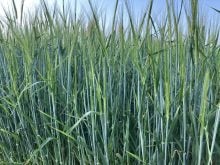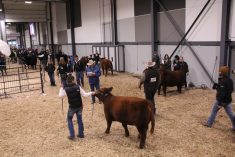The U.S. beef industry will be hoping for a far better start to 2024 than what occurred in 2023’s fourth quarter. A month remained when I wrote this but the five weeks from the third week of October saw a $9.38 per cwt live decline in fed cattle prices and a $9.89 per cwt decline in four weeks in the weekly comprehensive boxed beef cut-out. Somewhat alarmingly, the buildup to the Thanksgiving holiday failed to give the markets an expected lift.
The beef complex will now be hoping that beef demand at retail, food service and export levels will all increase significantly. It was essential that post-Thanksgiving demand show improvement, noted analyst Andrew Gottschalk, HedgersEdge.com. Domestic demand for the Christmas and New Year holiday period has been slow in developing, he said. The same can be said for holiday export demand. Growing concerns over a modest post-New Year recession may be partially responsible. Uncertainty is the enemy of all markets, serving as a catalyst to slow consumer spending. There are no shortages of crosswinds in the U.S. and world economies at this time, he said.
The fourth quarter did not treat the fed cattle complex well, with lower prices across the spectrum, said Gottschalk. The last time fourth-quarter prices averaged below third-quarter levels was in 2016. The most recent year when December prices averaged below November levels was in 2017. Additionally, only one year since 2008 — 2015 — recorded a lower first-quarter average price basis western Kansas than the prior fourth-quarter price, he said.
Read Also

The Canadian Cattle Association’s international advocacy efforts
Global ag policies affect Canadian food policy, so the Canadian Cattle Association participates in international and domestic forums
Weakness in live cattle futures prices, negative packer margins and smaller-than-expected steer and heifer slaughter all combined to drag down cash live cattle prices in the quarter. The December live cattle contract declined from $184.67 per cwt on November 2 to $168.77 per cwt on November 27. Packer margins were negative for 10 consecutive weeks since the week ended September 22 and were likely negative in December. Cash live cattle prices also fell sharply due to cattle feeders with hedged cattle accepting lower prices to take advantage of the positive basis between cash and futures prices.
Meanwhile, the outlook for reduced live cattle supplies in the first quarter has been reversed because of smaller feedlot marketings than expected. October marketings at 1.758 million head were 2.6 per cent below last year and were 0.6 per cent smaller than analysts’ average forecast. More importantly, they were seven per cent below last year after taking into account one more slaughter day this year. The slow pace means the front-end supply of cattle will remain above year-ago levels into the second quarter of next year. The November 1 cattle-on-feed total of 11.931 million head was 195,000 head higher than a year ago and was the fourth-largest total for the date (only 42,000 head below the record).
Front-end supplies (those on feed 150 days or more) project to remain above year-ago levels and above the previous five-year average going into the second quarter, said Gottschalk. They will likely trend like this throughout the entire quarter. The change in this category of cattle from November 1 to April 1 is projected to increase by 462,000 head. This compares to an increase during the same period a year ago of 199,000 head and the previous five-year average gain of 400,000 head, he said.
The bottom line to the factors noted above is that better beef demand will be crucial if the U.S. cattle and wholesale beef markets are to perform better in the coming two quarters than they did in 2023’s fourth quarter.
















